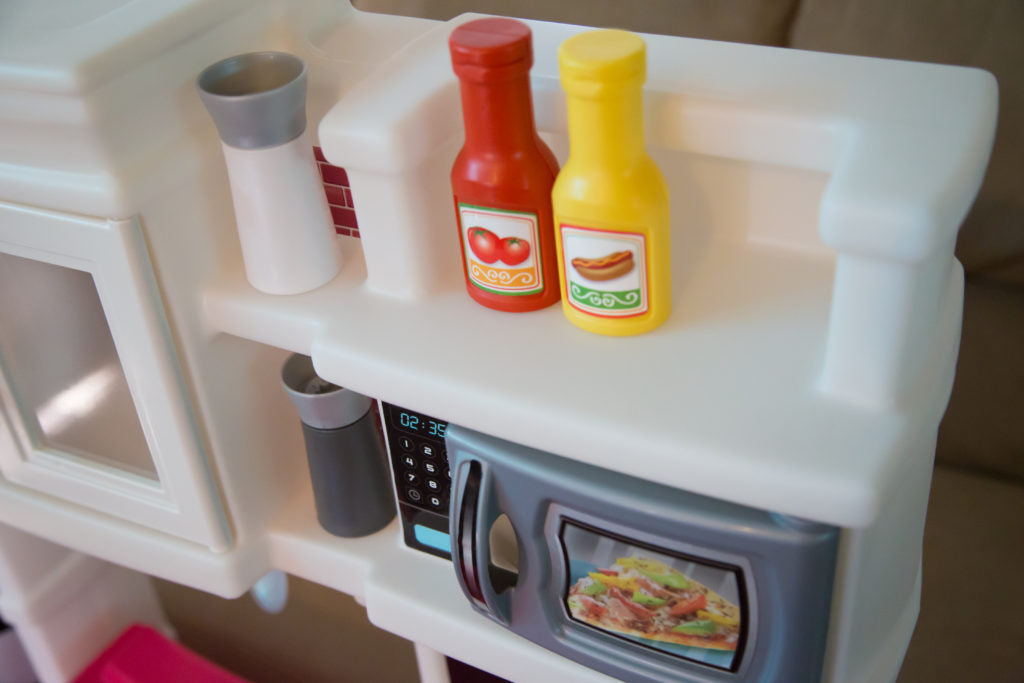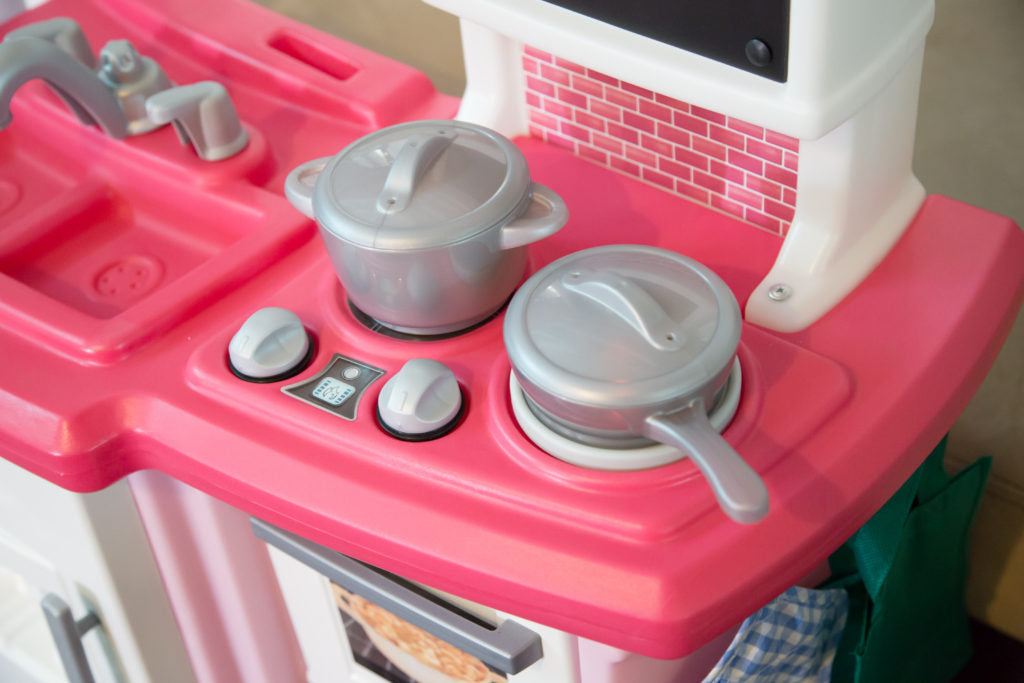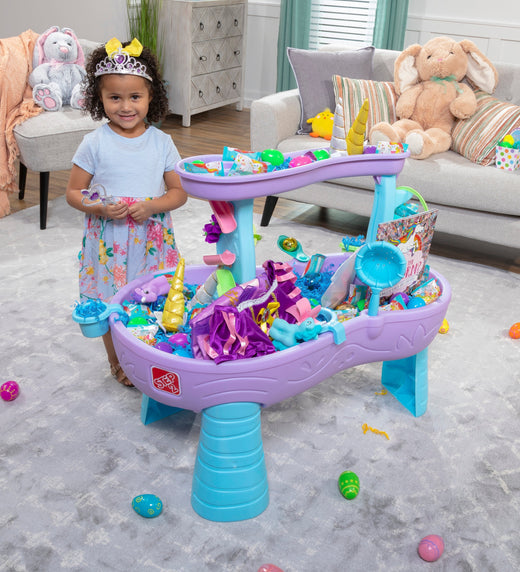Learning through play and in a natural environment is essential for all children. Play kitchens are great tool that can be used to teach various skills such as language, play, and more! Here are some tips and ideas for teaching through play using a play kitchen.
Tips and Ideas for Teaching Through Play

Label Common Items: Simply naming the items that your play kitchen includes is one way to expand vocabulary. Point to an item such as a spoon and pair it with the name “spoon” to teach the names of different items. This helps with expressive communication for children who are just finding their voice.
Receptive Skills with Common Items: Ask your child to point or show you where the different kitchen items are – “show me the spoon,” “hand me the ketchup” or “point to the oven” are different ways to phase it. This helps with receptive communication.
Examples of Common Items included: plates, bowl, spoon, knife, sink, oven, microwave,, phone, refrigerator, chalkboard, clock, cabinets, coffee maker, pots, pans, oven mitts, grocery bag, and more!

Label Actions: Narrate what you and your child are doing. For example, “you’re cooking pancakes, yum! I’m washing dishes.” Have your child do the same. Ask him/her “what are you doing?” or “what am I doing?”
Receptive Skills with Actions: Have your child show you actions. You can phrase this by saying, “show me cooking” or “open the cabinet so we can put the dishes away.”
Examples of Actions to teach: cooking, washing, baking, drawing or writing (on a chalkboard), talking (on the phone), etc.
Learn Prepositions: You can teach your child prepositions by labeling the prepositions – “the spoon is inside” or “the plates are on top,” etc. You can then switch it around and ask your child, “where are the spoons?” and teach them to answer using the correct preposition. Practice their listening skills by delivering an instruction such as “put the spoon inside the sink.”
Examples of Prepositions: inside, outside, on top, above, in front, behind, next to, over, under, etc.

Fill-in-the-Blanks: a prerequisite to answering questions is filling in the blanks. Going back to the basic skills on expanding vocabulary, you can use simple phrases such as “this is a _____” and hold up a spoon or point to the clock.
Functions of Kitchen Items: Teach your child about the functions of kitchen items by labeling what they are used for. For example, the sink is to wash dishes or wash your hands. The oven is to heat up food. The refrigerator is to keep food cold. This can be done by using the fill-in the blank method (“the refrigerator keeps food ____”), or if their language is at a higher level, simply ask, “what does a refrigerator do?”
Examples of items to learn: oven, refrigerator, clock, cabinets, sink, microwave, stove, pots and pans, spoon and fork, cups, etc.
Pretend Play: Using their own imagination or imitating what Mom or Dad does in the kitchen is a great skill for children to have. They can make up stories while playing in the kitchen, pretend they’re cooking or preparing a feast, make cookies or bake for a bake sale. Pretend play can be so diverse and literally be anything!
This post was written by Jenna Almirol at www.learningwithmaddy.com. Jenna has a BA in Psychology and a MA in Counseling Psychology. She currently works full-time as a Clinical Supervisor, primarily with children diagnosed with ASD.


